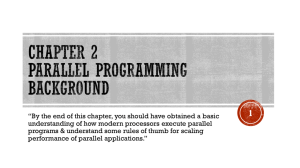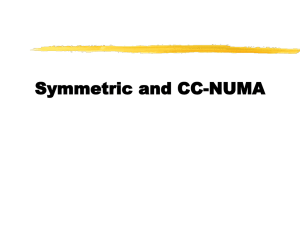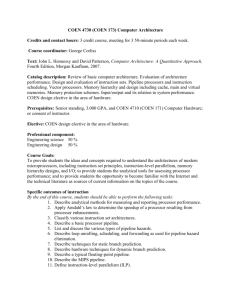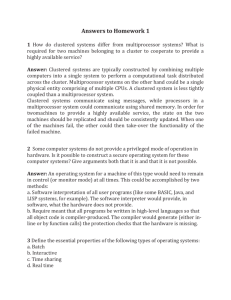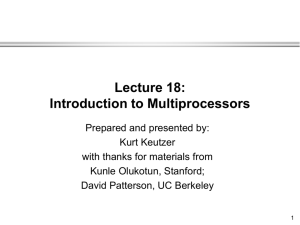Quiz 1 Solutions - School of Electrical Engineering and Computer
advertisement
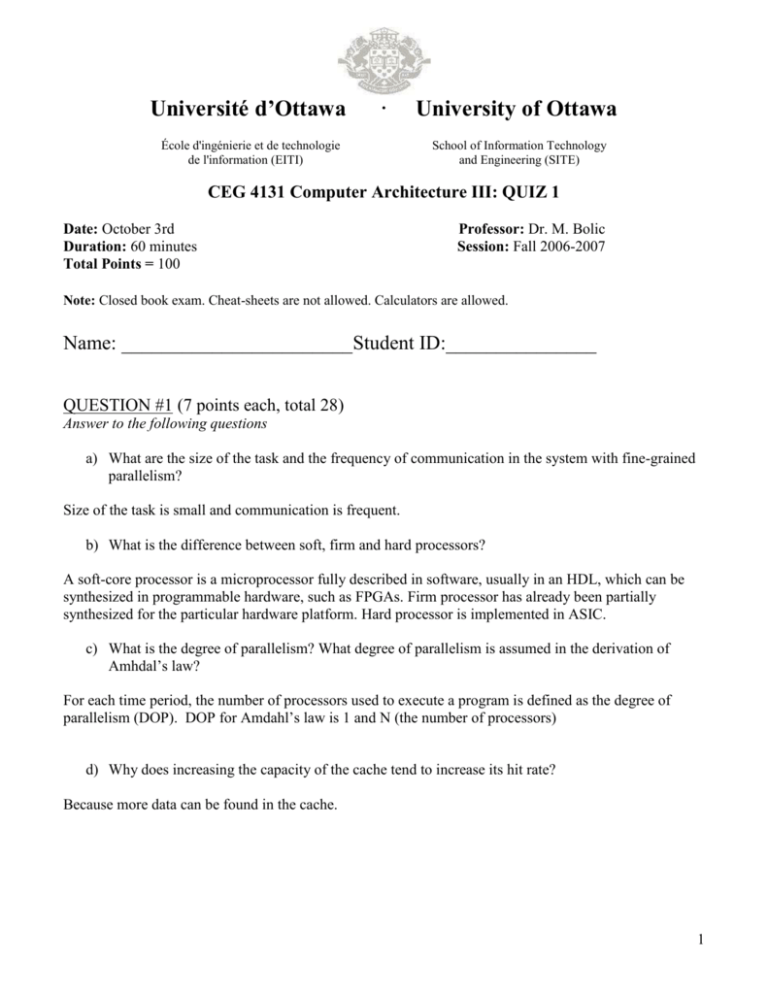
Université d’Ottawa · École d'ingénierie et de technologie de l'information (EITI) University of Ottawa School of Information Technology and Engineering (SITE) CEG 4131 Computer Architecture III: QUIZ 1 Date: October 3rd Duration: 60 minutes Total Points = 100 Professor: Dr. M. Bolic Session: Fall 2006-2007 Note: Closed book exam. Cheat-sheets are not allowed. Calculators are allowed. Name: _______________________Student ID:_______________ QUESTION #1 (7 points each, total 28) Answer to the following questions a) What are the size of the task and the frequency of communication in the system with fine-grained parallelism? Size of the task is small and communication is frequent. b) What is the difference between soft, firm and hard processors? A soft-core processor is a microprocessor fully described in software, usually in an HDL, which can be synthesized in programmable hardware, such as FPGAs. Firm processor has already been partially synthesized for the particular hardware platform. Hard processor is implemented in ASIC. c) What is the degree of parallelism? What degree of parallelism is assumed in the derivation of Amhdal’s law? For each time period, the number of processors used to execute a program is defined as the degree of parallelism (DOP). DOP for Amdahl’s law is 1 and N (the number of processors) d) Why does increasing the capacity of the cache tend to increase its hit rate? Because more data can be found in the cache. 1 QUESTION #2 (a 9 points, b 14 points, c 14 points, total 37) We have to perform parallel addition of M=128 integer numbers on N=4 processors. Assume that the interconnection network is built in a way that processors 1 and 2; 1 and 3; and 3 and 4 can communicate directly. a) Explain how the program for parallel addition would work. M=128 would be divided by 4, so that 32 numbers will be processed by each processos. After that, four partial sums (S1 to S4) are formed. Processor 4 sends S4 to processor 3, and processor 2 send S2 to processor 1 at the same time S1=S1+S2 and S3=S3+S4 can be done at the same time Processor 3 sends S3 to processor 1 S1=S1+S3 – final result is stored at processor 1 b1) Assuming that computation takes 1 time unit and communication between processors 0 time units, draw the parallelism profile. b2) What is the average parallelism? Will average parallelism increase if we increase the problem size M? (1*1+2*1+4*32)/34=3.85 Yes, it will increase with the problem size. c) Assume that computation takes 1 time unit and time to send and receive one integer number takes 2 time units. What is the speed-up and efficiency of this parallel system? c2) Derive the expression for speedup when M numbers are added on N processors. Addition takes T1 time units and communication takes T2 time units. Total time is 38=34 for computation and 4 for communication. S=128/38=3.36 E=3.36/4=0.84 S=M*T1/((M/N)*T1+(T1+T2)*log2N) 2 QUESTION #3 (a 18 points, b 6 points, c 11 points, total 35) a) Consider a 32-bit microprocessor that has an on-chip 4Kbytes direct-mapped cache. Assume that a cache line has a line size of two 32 bit words. Draw the block diagram of this cache and show its organization and how the different address fields are used to determine a cache hit/miss. How many bits are used for tags and how many for indexes? b) Explain in details the sequence of operations in case of cache hit during the reading cycle. Assume that 4 way set-associative write-back cache with LRU replacement policy is used. CPU requests contents of memory location Check cache for this data If present, get from cache (fast) 3 c) Explain in details the sequence of operations in case of cache miss during the reading cycle. Assume that 4 way set-associative write-back cache with LRU replacement policy is used and that the cache is full before the reading. CPU requests contents of memory location Check cache for this data If present, get from cache (fast) If not present, and write-back is used and the cache is full– write back the least recently used block from that set to the memory. Read required block from main memory to cache and place it in the place of the block that has been written back Then deliver from cache to CPU Cache includes tags to identify which block of main memory is in each cache slot 4

